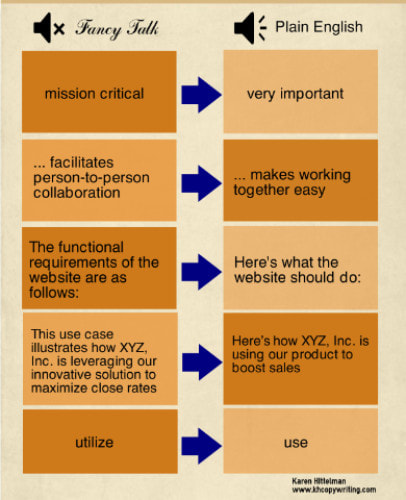It's tough to create a strong white paper on the cheap. The writing phase often requires research, SME interviews, and strategic planning—and copywriting fees can reflect that. Once you add in graphic design and layout, you’re looking at what might seem like a big investment for a single piece of content.
But for tech companies and other businesses that sell high priced solutions and services, the return on that investment can be huge.
A well-researched, well-written white paper (on a relevant and important business issue!) can help convince scrupulous prospects to make big purchases. It can give IT teams the ammo they need to get leadership buy-in. It can help differentiate your company and position your leaders as experts. And at the top of the marketing funnel, a white paper can alert and educate prospects about an emerging business issue they should be looking to address.
A good white paper is a terrible thing to waste; milk it for all its worth*.
Rather than developing a white paper as a standalone piece, why not surround it with a powerful posse of complementary content? Develop accompanying content that promotes your white paper; dives deeper into key themes; highlights experts; and sparks new discussions. Here are six examples:
*What's the correct way to write this phrase? Is it "for all it's worth" (contraction: milk it for all it is worth) or "for all its worth" (possessive: milk it for the inherent worth within it)? There doesn't seem to be a definitive answer, and now I can't stop obsessing about it. Which way do you think is correct?
But for tech companies and other businesses that sell high priced solutions and services, the return on that investment can be huge.
A well-researched, well-written white paper (on a relevant and important business issue!) can help convince scrupulous prospects to make big purchases. It can give IT teams the ammo they need to get leadership buy-in. It can help differentiate your company and position your leaders as experts. And at the top of the marketing funnel, a white paper can alert and educate prospects about an emerging business issue they should be looking to address.
A good white paper is a terrible thing to waste; milk it for all its worth*.
Rather than developing a white paper as a standalone piece, why not surround it with a powerful posse of complementary content? Develop accompanying content that promotes your white paper; dives deeper into key themes; highlights experts; and sparks new discussions. Here are six examples:
- Create a high-converting landing page that makes it easy to grab the white paper (i.e. non-gated or painless opt-in).
- Record short video pieces with any SMEs, partners or clients that contributed to the research—and add a link to the white paper at the end. Consider sharing your videos on LinkedIn and other social media channels.
- Repurpose your white paper into a multi-part blog series—and link to it from within the blog posts.
- Host a webinar on the same topic as the white paper. Offer a free download of the white paper as incentive for signing up for the webinar (or include a link to the white paper at the end of the webinar).
- Create an infographic that relates to your white paper (include a link to the white paper at the bottom). Promote your infographic on social media (share it on LinkedIn; link to it on Twitter; pin it on Pinterest; post it on Facebook)
- Create a “light paper”--a bite-size handout that summarizes the key takeaways of the white paper (and whets readers' appetite for more). Include a CTA to download the white paper.
*What's the correct way to write this phrase? Is it "for all it's worth" (contraction: milk it for all it is worth) or "for all its worth" (possessive: milk it for the inherent worth within it)? There doesn't seem to be a definitive answer, and now I can't stop obsessing about it. Which way do you think is correct?







 RSS Feed
RSS Feed